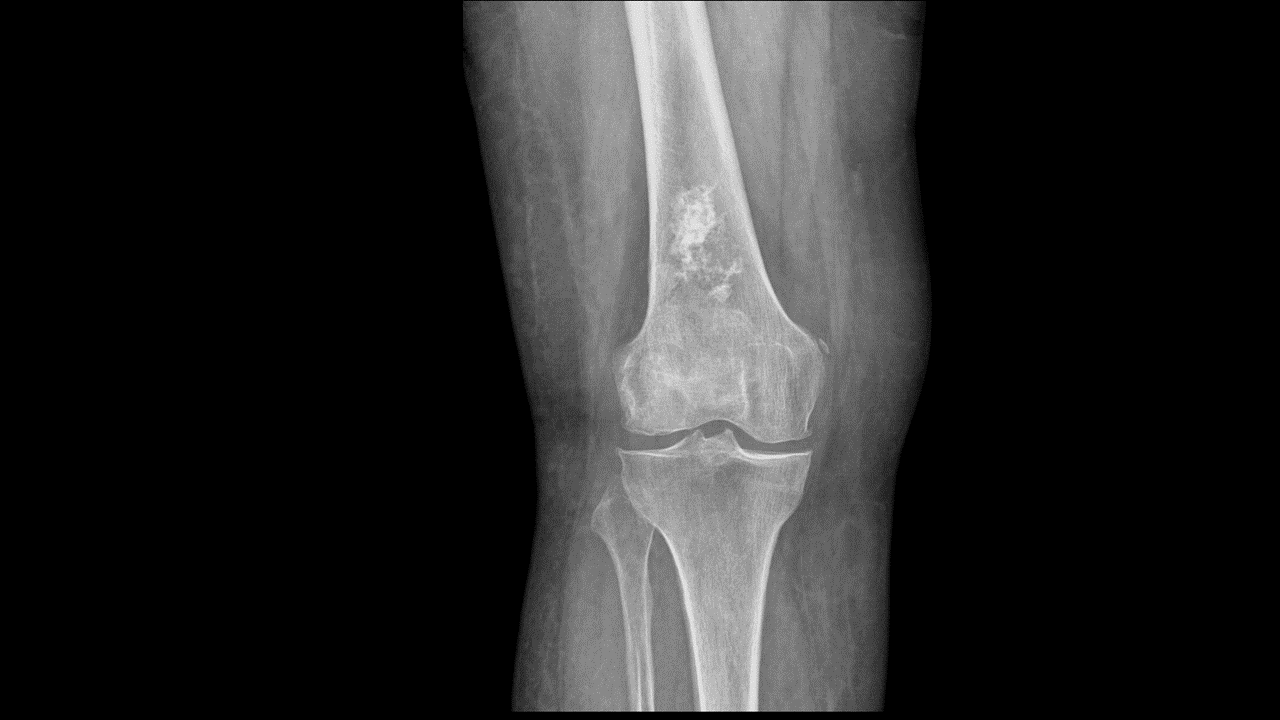Chondrosarcoma X Ray
Jump to navigation
Jump to search
|
Chondrosarcoma Microchapters |
|
Diagnosis |
|---|
|
Treatment |
|
Case Studies |
|
Chondrosarcoma X Ray On the Web |
|
American Roentgen Ray Society Images of Chondrosarcoma X Ray |
Editor-In-Chief: C. Michael Gibson, M.S., M.D. [1];Associate Editor(s)-in-Chief: Rohan A. Bhimani, M.B.B.S., D.N.B., M.Ch.[2]
Overview
On x-ray, chondrosarcoma is characterized by lytic lesion, intralesional calcification, endosteal scalloping, and cortical remodeling.
X Ray
Views
- AP and lateral view of the affected bone is needed.
Findings
- An x-ray may be helpful in the diagnosis of chondrosarcoma. Findings on an x-ray suggestive of chondrosarcoma include: :[1][2][3][4]
- Lytic or blastic lesion
- Intralesional calcification classicaly called as popcorn calcification.
- Endosteal scalloping affecting more than two thirds of the cortical thickness
- Moth eaten appearance or permeative appearance in higher grade tumors.
- Cortical remodeling, thickening and periosteal reaction seen in mesenchymal chondrosarcoma.
- These findings are useful in distinguishing between an enchondroma and low grade chondrosarcoma.
- De-differentiated chondrosarcomas radiographically show a lower grade chondroid lesion with superimposed highly destructive area consistent with the high grade transformed dedifferentiated chondrosarcoma.
 |
References
- ↑ Peabody, Terrance (2014). Orthopaedic oncology : primary and metastatic tumors of the skeletal system. Cham: Springer. ISBN 9783319073224.
- ↑ Czerniak, Bogdan (2016). Dorfman and Czerniak's bone tumors. Philadelphia, PA: Elsevier/Saunders. ISBN 9780323023962.
- ↑ Marco RA, Gitelis S, Brebach GT, Healey JH (2000). "Cartilage tumors: evaluation and treatment". J Am Acad Orthop Surg. 8 (5): 292–304. PMID 11029557.
- ↑ Frassica FJ, Unni KK, Beabout JW, Sim FH (1986). "Dedifferentiated chondrosarcoma. A report of the clinicopathological features and treatment of seventy-eight cases". J Bone Joint Surg Am. 68 (8): 1197–205. PMID 3021775.